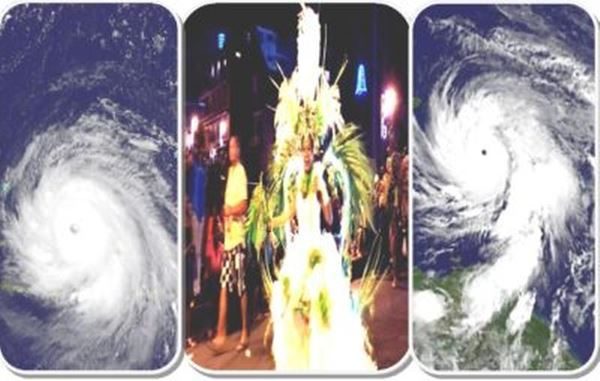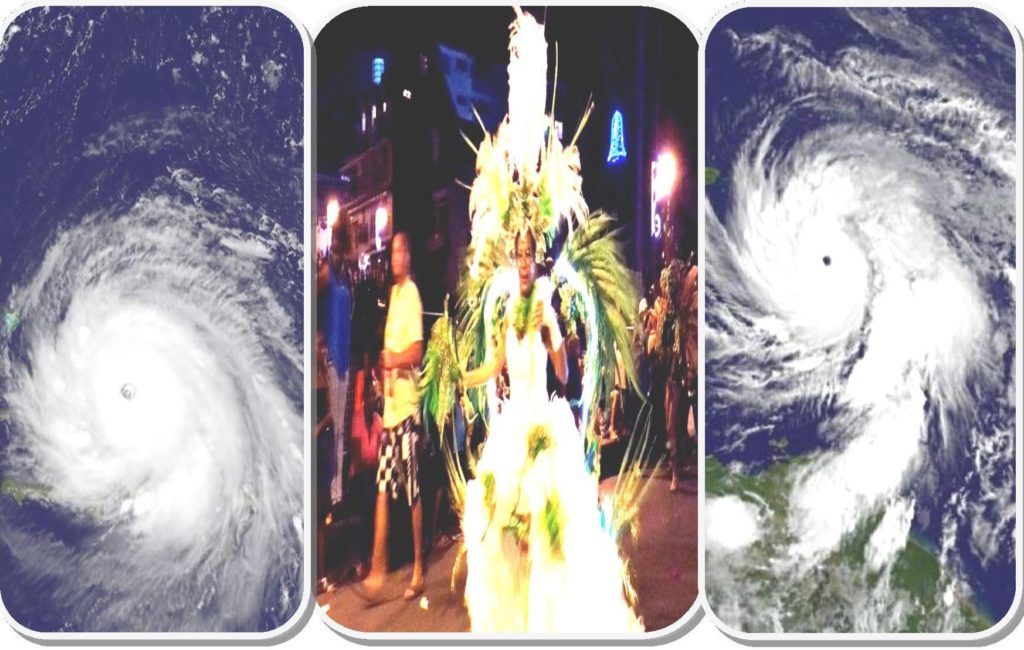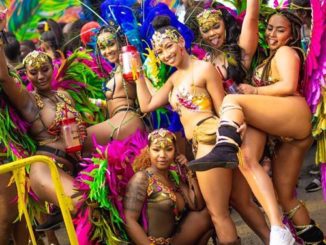
After the two violent hurricanes hit the Caribbean last September, many believed that it was all over for the devastated islands. So, we saw people leaving our islands in a hurry and going back home; they came for a very nice life with no troubles in our region – which does not exist anywhere – and they met two furies… If for a moment this terrible shock made us doubt, we knew that we would recover, slowly but surely. It is because of this innate optimism all the islands that were hard hit decided, despite all, to organize their carnival, a few weeks after the disaster. “That’s incredible!”, some people say…
That was the case of St. Croix in the US Virgin Islands, last December and that was the case of St. Martin, St. Barthélemy, Dominica and Puerto Rico with the city of Ponce during this month of February. Even if the festivities were considerably reduced, they were maintained to allow these inhabitants to forget their misfortunes by singing, dancing, music, plastic arts, design, sewing among others, in short to express all this beautiful creativity they have. Carnival is undoubtedly a cure for the people.
In the Caribbean, carnival does not take place in the same period. Almost half of the islands just celebrated this great popular festival, that is before Lent. These include Bonaire, Aruba, Curaçao, Trinidad & Tobago, Carriacou (Grenada), Martinique, Dominica, Guadeloupe, St. Martin, St. Barthélemy, Puerto Rico (city of Ponce), Haiti and the Dominican Republic. It should be noted that the Dominicans continue the carnival festivities which will end on March 4 with a big national parade with all provinces of the island in the capital, Santo Domingo.
The other islands chose different times of the year to organize their carnival : St. Kitts (November-January); Montserrat (December-January); US Virgin Islands/St. Croix (December-January); The Bahamas (December-January and several dates in the year on the various islands of the archipelago); Jamaica (February-April or from Easter Sunday to the following weekend); British Virgin Islands/Virgin Gorda (April); US Virgin Islands/St. Thomas (April-May); Cayman Islands (April-May); Sint Maarten (April-May); US Virgin Islands/St. John (June-July); St. Lucia (June-July); St. Vincent (June-July); Cuba, city of Santiago de Cuba (July); Sint Eustatius-Statia (July); Saba (July-August); British Virgin Islands/Tortola (July-August); Antigua & Barbuda (July-August); Grenada (July-August); Barbados (July-August); Anguilla (August); Turks & Caicos Islands (December).
This variety of dates is due to the history of each territory but it is also due to the economic situation of the islands. To have more foreign tourists and to invite Caribbean neighbours to carnival festivities, it is better not to be too much in competition with many other islands in the region. So, carnival is not just a popular moment to have fun and to be united, it’s also a time to develop the economy of the territories.
The traditional agricultural crops do not exist anymore or are in steep decline, carnival (and more broadly culture) has become a geniune national industry that is not controlled by anyone because not only is it part of the entrails of peoples but above all it is a State matter.




